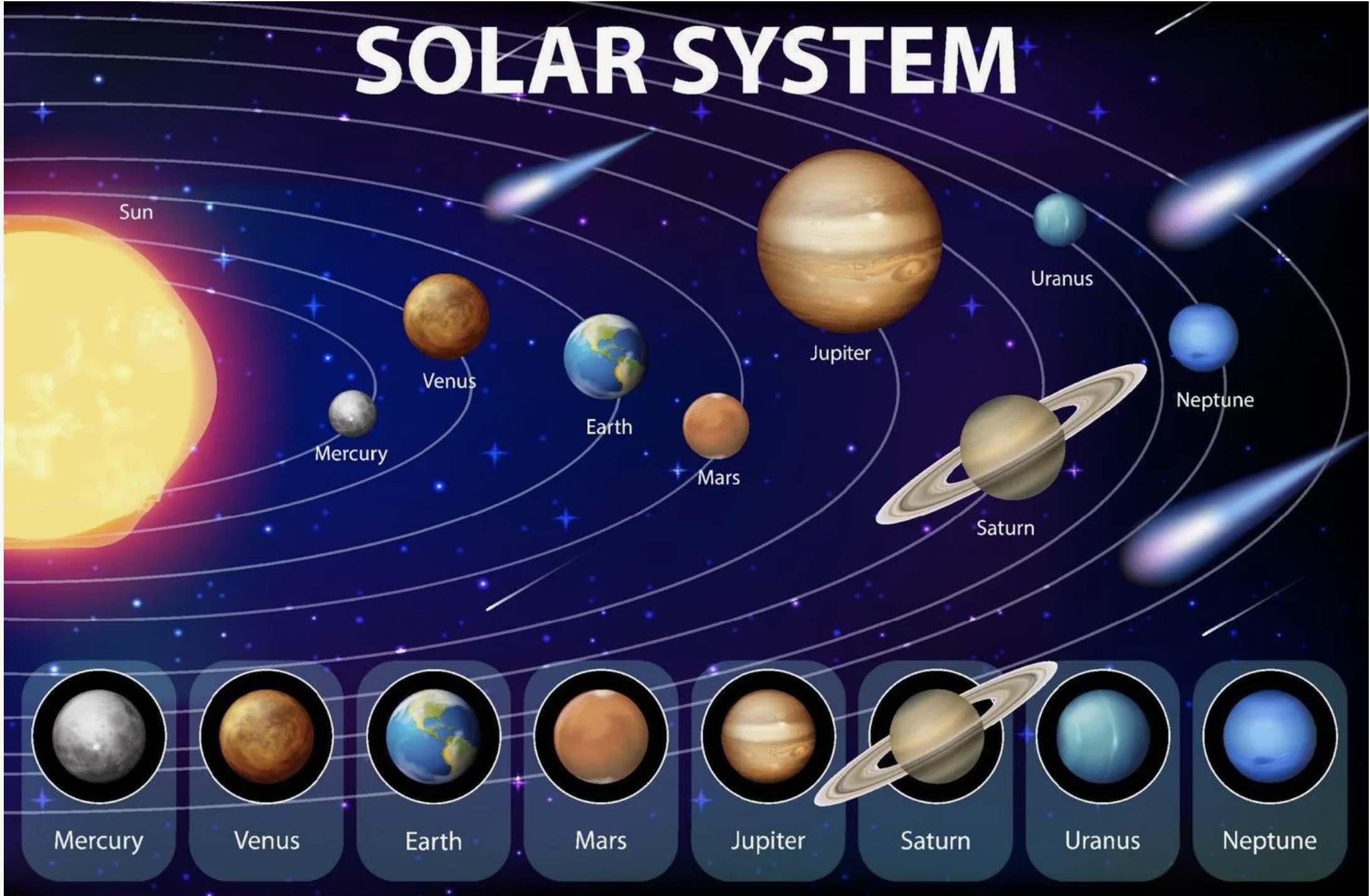SCIENCE-SOLAR SYSTEM
- Подробности
- 756
The Solar System has the Sun in the center. It has eight planets and many moons. There are also dwarf planets, asteroids, and comets.
SOLAR SYSTEM

The Solar System began about 4.6 billion years ago. It formed from a big cloud of gas and dust. Our Solar System is part of the Milky Way galaxy, which has hundreds of billions of stars.
At the center is the Sun. Its gravity holds everything in orbit. The Sun has almost all the mass in the Solar System (about 99.8%), so planets and other objects move around it.
There are eight planets: Mercury, Venus, Earth, Mars, Jupiter, Saturn, Uranus, and Neptune. The first four are rocky (terrestrial) planets. The last four are giant planets—two gas giants (Jupiter, Saturn) and two ice giants (Uranus, Neptune).
There are also dwarf planets like Pluto, Eris, and Ceres, many moons, and small bodies such as asteroids, comets, and meteoroids. These objects help scientists learn how the Solar System first formed.
Our whole Solar System moves around the center of the Milky Way at about 220 km/s (≈ 790,000 km/h) and needs about 230 million years to make one lap. The Milky Way itself also flies through space—about 600 km/s (≈ 2.2 million km/h) relative to the background of the universe.
LISTEN TO THE TEXT





 Как правильно изучать английский язык по карточкам (статьи)
Как правильно изучать английский язык по карточкам (статьи)